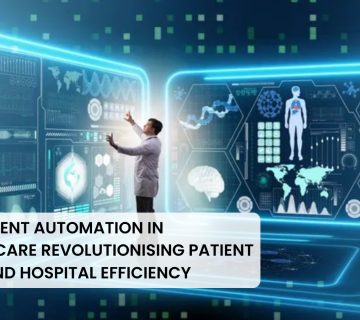In today’s fast-paced market, speed and accuracy are a vital part of organizational survival. The level of service provided in the finance department, the supply chain department, the human resource department, and the customer service department is dependent on the seamlessness of coordination.
This is where SAP Enterprise Resource Planning (ERP) can step in to transform complexity into simplicity and operations into efficiency.
What Is SAP ERP?
SAP ERP (Enterprise Resource Planning) is a global platform for enterprise management, produced by SAP SE, one of the world’s top application developers.
Essentially, SAP ERP brings together various functions, including finance, procurement, manufacturing, sales, HR, and analytics, into a unified, integrated experience. Rather than being on disconnected islands, data within SAP ERP flows seamlessly between functions, enabling organizations to make informed, real-time, data-driven decisions.
Reasons for Businesses to Use SAP ERP
- Integrated Business Processes
A strong benefit of SAP is that each core function is on one platform that integrates each operation.
Whether it’s inventories, payroll, or customer orders, each function can, and will, communicate with the next and provide continuity and accuracy.
Example:
When a customer places an order, SAP updates inventory levels, sends the order to production, provides procurement with the information it needs, and adjusts financial records, all automatically and with no delay.
- Insights and Analytics in Real-Time
SAP ERP is designed using in-memory computing – providing instant data processing.
This means leaders no longer have to wait for reports – they can access live dashboards that identify trends, and take action before it becomes an issue.
SAP Fiori and SAP Analytics Cloud improve visibility with easy-to-use interfaces and AI-derived insights.
- Automation and Efficiency
When data entry or workflows are manual and repetitive, businesses tend to slow down.
SAP automates these activities, from generating invoices to reconciling finances, resulting in fewer errors and giving teams time to focus on strategic initiatives.
Automation also improves speed and accuracy in:
- Procurement cycles
- Order fulfillment
- Asset management
- Financial close
- Scalability and Customization
Each business goes through changes, and so does SAP ERP.
As a new company or a global enterprise, you can start small and then scale as your needs change in an agile, modular manner. With cloud-based deployment options like SAP S/4HANA Cloud, companies gain flexibility, automatic updates, and reduced IT overhead while still receiving the same performance.
- Compliance and Security
As data regulations tighten and cybersecurity threats increase, SAP ERP delivers enterprise-grade governance. With its built-in compliance tools, organizations can demonstrate compliance with international standards such as GDPR, ISO, and SOX.
The SAP ERP security framework secures sensitive data.
NexXora's Contribution to SAP Transformation
NexXora recognizes that introducing SAP ERP isn’t merely about putting software on computers. It’s about reengineering work, transforming the way businesses do business. Our team collaborates with customers to create a strategic plan for integrating their new SAP environment while maximizing ROI through optimization.
What do we do?
- SAP S/4HANA deployment & migration.
- AI, IoT, and ML integration for intelligent automation.
- Cloud transformation focusing on scalable approaches.
- Custom dashboards and analytics for data-informed business intelligence.
Whether you are a mid-sized business startup or a large enterprise, NexXora gives authorities and firms the opportunity to streamline workflow, eliminate needless operational costs, and accelerate crucial decisions.








No comment